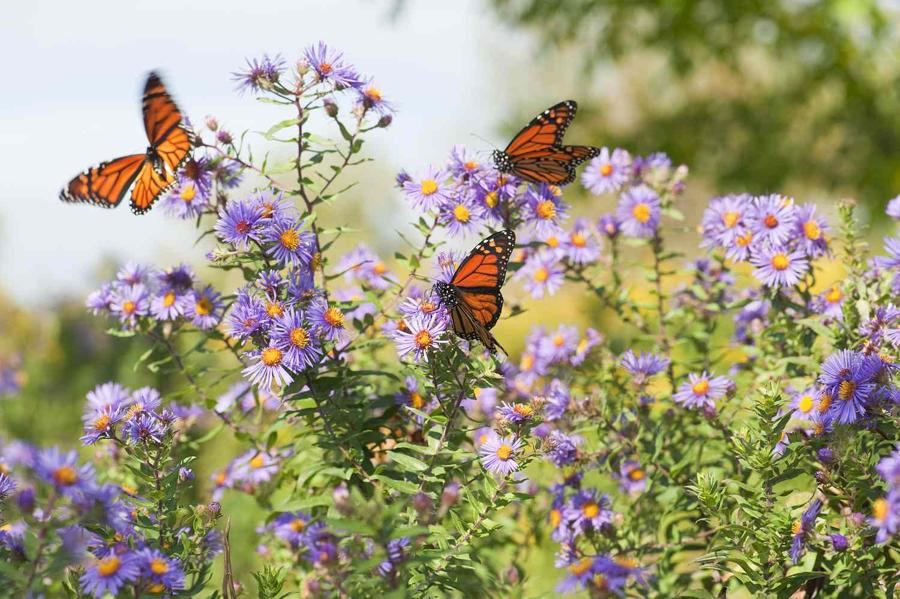
Learn How to Help Wisconsin Pollinator Populations for a Blooming Ecosystem
by Camila Cruz, age 15
Many people undervalue our pollinators, but about 87% of flowering plants worldwide depend on them. And there are many ways we can help support them, from letting lawns grow to avoiding pesticides.
Pollinators are creatures that go from plant to plant to consume nectar and pollen. In doing this, they spread the pollen, helping plants reproduce. Pollen is necessary to fertilize plants. Some of the most popular pollinators in North America are hummingbirds, moths, flower flies, beetles, bees, butterflies, and, in the southwestern parts of the U.S. and Mexico, nectar-feeding bats.
Pollinators are very important to the environment and ecosystem. In the U.S., around 150 food crops depend on pollinators. Unfortunately, the population of pollinators is decreasing because of habitat loss, pests, nutritional deficiency, insecticides, and extreme weather events.
There are plenty of ways to help these wonderful pollinators. “Low Mow May” is a great example of an easy but effective way to help pollinators. Letting grass and flowers grow in early May, provides pollinators with a food source and helps their habitats grow.
Leaving the fallen leaves on the ground provides a good nesting habitat and is also a great way to help pollinators. Pollinators also build their nests on bare ground, dead wood or twigs, rock piles, and leaf litter.
Planting native plants such as Early Sunflower and Butterfly Weed gives pollinators a good and stable food source. Seeds of native plants can be purchased in local plant nurseries. Some schools and community groups such as libraries give them out for free.
Using pesticides is counterproductive, even when growing plants to help pollinators. Exposure to pesticides can be very harmful to them even if they’re not in direct contact with the spray. Avoiding the use of pesticides is ideal.
It’s easy to do small things to help our pollinators, but those small things have a huge impact on the environment and the food chain.
[Source: Madison.com]



Loading Comments...